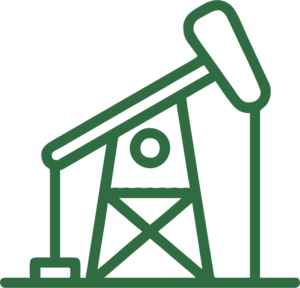
Environmental impact assessment on the extracting, processing and transporting of oil, petrochemicals and conventional gas
We have written about the procedure of environmental impact assessment and the special aspects of EIA for certain categories of planned activities. And now, we decided to analyze the distinctive features of environmental impact assessment of business entities activity of which related with extracting, processing, storing and transporting of conventional gas and oil. The law of Ukraine “On environmental impact assessment’ defines the following types of activity that negatively affect on environment and are the subject of EIA:
– oil refinery and gas-processing plants (except enterprises that produce only lubricants from raw oil), gasification units or liquefaction of coal or bituminous shale;
– oil and gas extraction on the continental shelf;
– pipes for transport oil, gas, chemical substances diameter more than 800 millimeters and length of more than 40 kilometers;
– facilities for storing of oil, petrochemicals and chemicals with a capacity of 200 thousand tons or more.
These types of activity refer to the first category, and it means, that documents in the process EIA should be submitted to the Ministry of ecology and natural resources of Ukraine.
How do activities of mentioned below objects impact on environment and human health? Oil refineries are the main pollutants of atmospheric air. The pollutant substances that emitted into the atmosphere by the oil refineries are plum bum, nitrogen oxide, sulfur oxide, carbon monoxide, benzene, dioxins and chlorine. Emissions with plum bum lead and accumulate in soil. The period of removal of accumulated plum bum from the soil is more than 700 years. Moreover, the emissions of pollutants of oil refineries cause greenhouse effect that destroys ozone layer of planet.
There is a threat of soil pollution by oil and petrochemicals during well drilling and pipeline transport. Oil spill is hazardous because oil spreads in breadth and dips deep into the soil. Spilled oil is absorbed by interstices of soil, and its physical and chemical composition changes. It reduces the drainage capacity of the soil and disrupts the feeding of root systems of plants and trees.
At design stage should be considered the ways of oil spills clean-up. There are physical and chemical, mechanical and biological methods of oil spills clean-up. The most ecological one is biological – bioremediation – clean-up of air, soil and water through metabolism process of plants, mushrooms, insects, bacterias and worms.
One of the effective method of oil spills clean-up is using of the absorbents. It allows quickly (in comparison with other methods) cleaning and, if required, increasing the adsorbents concentration. As adsorbent are used peat, peat masses (lignine) and chipped wood.
The process of environmental impact assessment of extraction and transportation of oil and gas, and also, oil refineries should includes the researches of impact on atmospheric air, soils and water bodies (if available). The report of environmental impact assessment must consist of the results of these researches, prognosis of possible impact in future times and measures of its reducing on environment and human health. More on the procedure of environmental impact assessment you can find here and in the Act of Cabinet of Ministers of Ukraine.